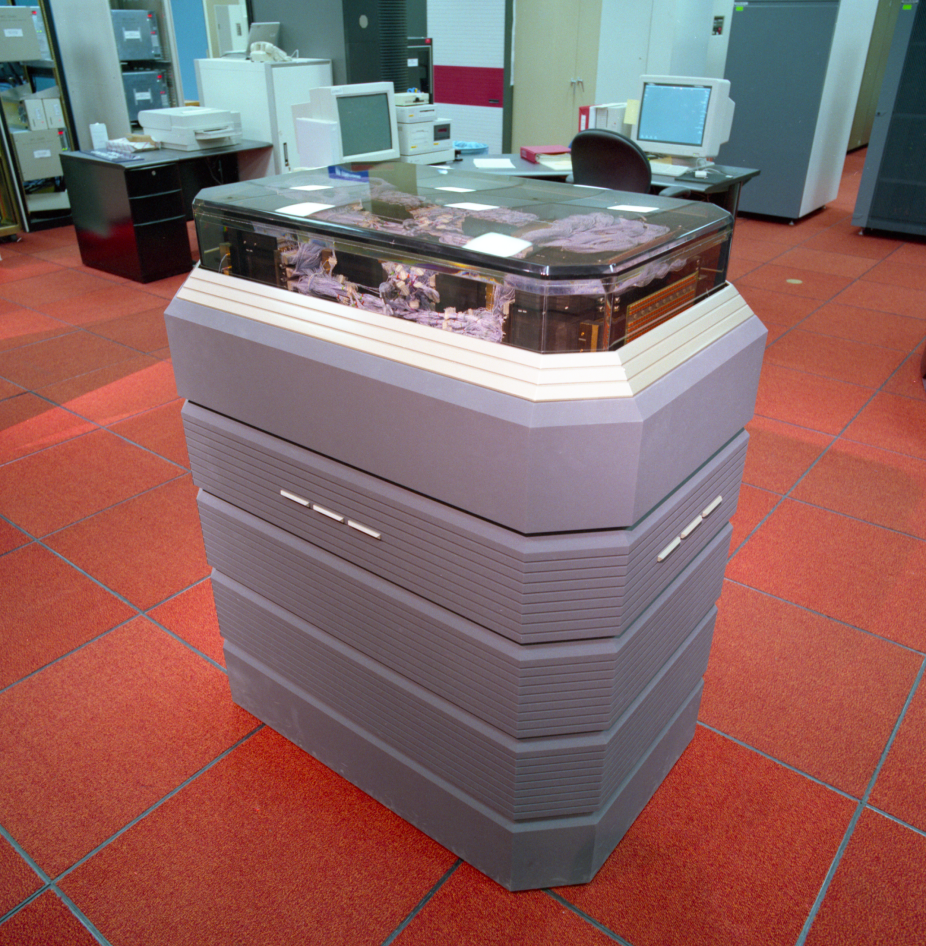CCC Cray-3 - Graywolf

Cray Computer Corporation
In use: October 1, 1993 - March 25, 1995
Experimental use
Peak teraflops: 0.00
Processors: 4.00
Clock speed: 0.50GHz
Memory (terabytes): 0.00TB
Electrical Power Consumption: 90.00 kW
The Cray-3 was the brainchild of Seymour Cray, who started its development while he was still chief architect with Cray Research, Inc. (CRI). CRI spun the Cray-3 development team in Colorado Springs off as an independent company in 1989, and Seymour named this new company Cray Computer Corporation (CCC). CCC built four prototype Cray-3 systems in the early 1990s and was building four additional systems that it hoped to market.
CCC delivered a Cray-3 supercomputer to NCAR on May 24, 1993, as a test and evaluation system. The gray, four-foot-tall machine was called “Graywolf,” following an NCAR tradition of naming computers after 14,000-foot peaks in the Colorado Rockies. Seymour had decided to loan Graywolf to NCAR, in part, to expose it to use by NCAR scientists and help CCC develop its operating system, compilers, and libraries in a real-world environment. In doing so, he said, "If the Cray-3 can survive NCAR, it can survive anywhere."
Graywolf carried serial number 5 in the Cray-3 product line and was its first “production-ready” system. (CCC used the first four systems in-house for hardware design and software check-out.) The Cray-3 was unique in that it used gallium-arsenide circuits, which could be clocked faster than silicon-based integrated circuitry at that time. The Cray-3 was designed to have eight octants of circuit boards, immersed in a circulating Fluorinert bath to keep the circuitry cool.
Graywolf was a two-octant Cray-3 and, while capable of having up to four processors, it had two processors, 128 megawords (1 gigabyte) of memory, 20 gigabytes of disk space, and a clock speed of 2.08 nanoseconds (480 MHz) — the fastest clock speed of any supercomputer then available. It was connected via HIPPI to NCAR's Mass Storage System. Graywolf ran CCC's Colorado Springs Operating System, which was based upon the Cray-2 version of the Cray Research UNICOS operating system, CCC's vectorizing Fortran and C compilers, optimized math libraries, debugger and performance tools.
The Cray-3 used gallium arsenide integrated circuits in place of silicon for all of its logic circuitry. This circuitry and the system's memory were contained under a translucent, smoky gray acrylic lid in the top eight inches of the system cabinet. The larger portion of the Cray-3 cabinet beneath the lid contained the Fluorinert circulating pumps, power supplies, and system control and monitoring devices. Graywolf required 90 kilowatts of power and produced 310,000 BTUs of heat per hour – enough to warm six 2,000-square-foot homes.
NCAR used Graywolf to run atmospheric and oceanic circulation simulations, and the system was also used for CCC software development. NCAR's atmospheric circulation model helped CCC discover a Boolean logic error in the square-root hardware of the Cray-3. The Cray-3 had introduced a new square-root instruction not previously available in the Cray-2 or Cray-1, and the hardware produced the wrong result for one out of every 64k operands. CCC provided a temporary “fix” in the compiler – essentially, “don't use the new square-root hardware”) and provided a fix to the hardware three months later.
Graywolf was decommissioned on March 26, 1995, the day after CCC filed Chapter 11 bankruptcy, and the machine was returned to CCC's Colorado Springs facility.